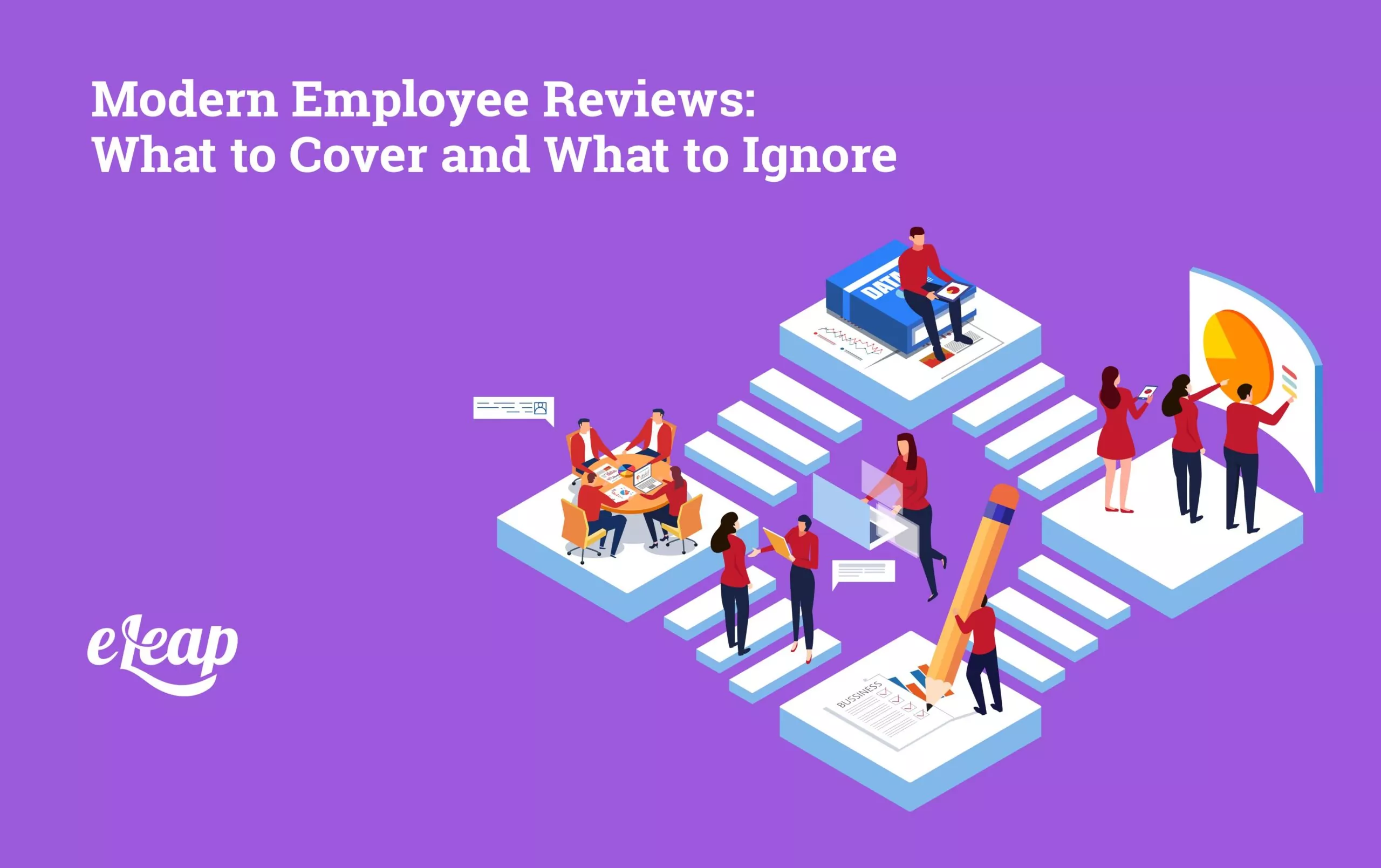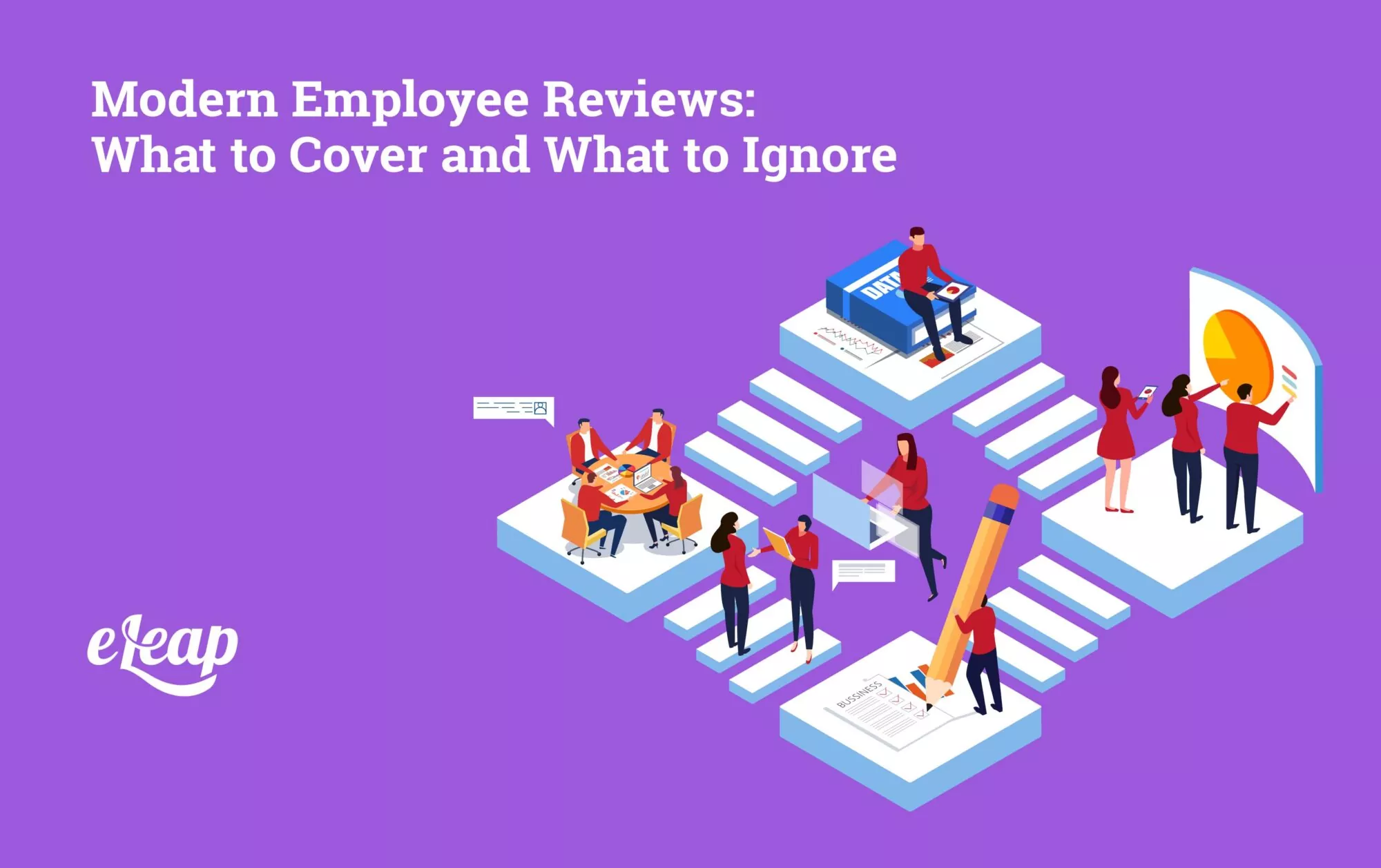Modern Employee Reviews: What to Cover and What to Ignore

Annual performance reviews – we all hate them. It’s time that we admitted that. Managers and team members alike loathe these impersonal, virtually worthless goads designed to punish employees for not reaching arbitrary goals.

Those are harsh words, but they’re deserved. And the deep truth in them is why the annual performance review is dying out across the world. However, that does not mean it is not being replaced by something else.
The need for employee reviews remains, and it is up to employers to ensure that they cover what they should. It is the responsibility of decision-makers and leaders to make certain that employee reviews help the company (and the employee!) grow, develop, and succeed.
The Failure of Annual Performance Reviews
Before we explore modern employee reviews and what they should cover, it’s important to delve into why, where, and how annual performance reviews failed. There are so many ways, it’s hard to pick where to begin!
- Past-Focused – Perhaps the single most important reason that old-style performance reviews are a waste of time and money is that they’re almost exclusively focused on the past. How could they not be? When you’re reviewing an employee once per year, that review needs to take into account missteps and actions that occurred as far back as 364 days previously. What’s the use in providing feedback about what an employee should have done a year later? It’s useless.
- Punitive – Another reason that annual performance reviews are dying out is that they are punitive in focus. Oh, sure, that’s masked under the guise of helpful guidance and advice, but ultimately, it’s a “shape up or ship out” discussion for employees who don’t measure up and a meager reward for employees who meet or exceed expectations.
- Arbitrary – Too often, the metrics that underlie annual performance reviews are pretty meaningless. Your employees know it, and chances are that if you give yourself time, you’ll realize it as well. What’s the point of holding employees accountable for not reaching some arbitrary line in the sand? If the goals mean nothing to the employee, then what’s their incentive to reach them?
No, annual performance reviews don’t do much to bolster morale, improve performance, or create a more cohesive team. They usually do the reverse. They tear down. They de-incentivize. They separate.
A Better Way
The modern employee review or performance appraisal offers a better way to move forward. Instead of dividing, it can unite. Instead of tearing down, it can build up. How, though? What should you cover in these reviews if you can’t point back to past performance and use that to encourage improvement?
Timely Coverage
A review must cover things that occurred in the past by its very nature. We’re not arguing that you should somehow focus on the present moment only. What must occur is a shift toward more real-time feedback. Rather than highlighting mistakes from six months or a year ago, discuss recent occurrences. After all, the review is supposed to help your employees improve. That’s not possible if the feedback comes too late for course correction to work. Timely coverage ensures that you’re able to discuss things while they are still relevant and when your feedback can result in improvement.
A Real Discussion
Another important part of the modern employee review is a focus on having an actual discussion. In the past, employee reviews were one-way. The manager talked, and the employee listened. While that might work fine for (some) managers, it is useless for employees who care about their jobs. Understand that information must flow both ways for improvement to occur. Your employees should be free to provide feedback to your managers during reviews, not just to receive feedback.
Transparency
Your reviews should foster transparency at every stage. An employee should never feel blindsided during a review. That leads to them taking a defensive position and immediately negates any good that the review might have achieved.
Goals That Matter
What are your goals for the employee? What does the organization need to see from them? Now, turn the situation around. What does the employee need from the organization to succeed? How can you support them in their journey? What can you do to help foster professional and personal growth?
Set clear goals in all of these areas and include the team member in the discussion. Get feedback from them about what they need to grow and thrive. Often, you’ll find that employees want to perform well. They want to do their jobs to the best of their ability. Things outside their control hold them back. As a leader, you can remove roadblocks, provide tools and platforms, and help ensure that they’re able to do a great job (and that they want to do great work).
Actionable Insights
Your reviews should be designed to achieve multiple goals, but one of the most important is the ability to deliver actionable insights. Every meeting should provide clear action items. If nothing else, the manager and the employee should agree on a few basic steps that must be taken before the next review.
Frequency Considerations
While this tip doesn’t touch on what to cover in a review, it does touch on the reviews themselves. Schedule your reviews closer together – monthly reviews do much more good and provide better improvement than annual reviews, for instance. However, you may want to go even more frequently. Weekly check-ins followed by monthly reviews may be a great combination to ensure that employees receive actionable feedback and vital guidance and can share their thoughts promptly.
In Conclusion
Modern employee reviews bear little resemblance to the annual performance reviews of yesterday. Today’s reviews are more about generating discussion, sharing insight, building employees up, and creating a stronger team that supports business success. Following the tips in this post will help ensure that your employees feel supported, have the tools and platforms necessary for growth, and feel valued.